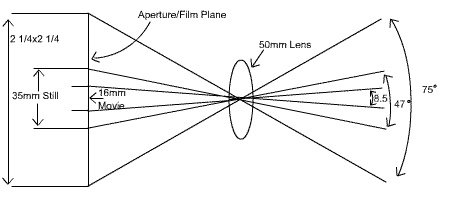
A 4 x 5 still camera lens is designed to cover a very large image circle but can do that only at a reduced resolution. If you use only the center of the image produced by that 4 x 5 lens on a 35-mm movie camera it would give poor results. A lens for a 35-mm still camera would have a much higher resolution than a 4 x 5 camera lens, but could only cover a small circle in the center of a 4 x 5 camera format